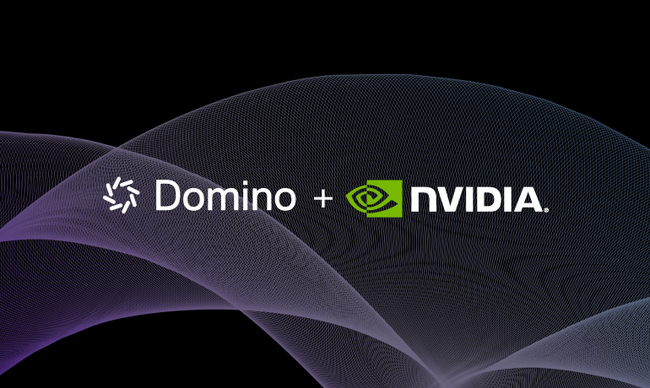Optimizing Data Preparation for Enterprise Data Science
Domino2024-11-05 | 29 min read

Introduction
Why Data Preparation Is a Bottleneck for Data Science Teams
Are data preparation bottlenecks slowing down your AI innovation? Data wrangling often consumes 80% of a data scientist's time—cleaning, formatting, and blending diverse datasets. This isn’t merely an inconvenience; it significantly delays research, hinders crucial insights, and dramatically increases the risk of errors creeping into your models.
The challenge escalates as enterprises grow and data sources proliferate. Data originates from various platforms—cloud services, legacy databases, real-time streams, and external APIs—each with its unique format, structure, and governance policies. Without a robust, structured approach to data preparation, teams face repetitive work, miss vital insights, and struggle with inconsistencies that severely compromise model accuracy.
This article will explore the critical aspects of data preparation, including data cleaning, integration, governance, and the advanced techniques Domino Data Lab provides to streamline these processes.
The Need for a Scalable, Governed, and Efficient Data Prep Workflow
A fragmented approach to data preparation isn't merely time-consuming—it introduces significant operational risks. Data silos hinder the enforcement of consistent quality standards, leading to data inconsistencies and unreliable models. When data is scattered across disparate systems, governance breaks down, making tracking lineage or ensuring compliance nearly impossible.
For Data Scientists to accelerate their work, enterprises need a centralized and standardized approach. The most effective solutions involve:
- Automating repetitive tasks: Streamlining data cleaning, transformation, and formatting reduces manual effort and minimizes errors.
- Standardizing data access: Providing a unified, governed access layer across teams ensures consistency and eliminates data silos.
- Maintaining detailed audit trails: Tracking data changes and access history is crucial for reproducibility, compliance, and debugging.
By implementing a well-structured and centrally managed data preparation workflow, organizations can mitigate risks, boost efficiency, and empower their Data Science teams to focus on what they do best—building and deploying cutting-edge models.
How Domino Addresses These Challenges
Domino Data Lab provides a structured, unified environment that empowers data science teams to efficiently access, clean, transform, and version their data. Unlike fragmented toolchains that introduce complexity and errors, Domino offers a streamlined approach, enabling organizations to:
- Automate data cleaning and transformation with a rich set of built-in, native tools. Domino simplifies complex data wrangling tasks, allowing Data Scientists to focus on analysis and modeling rather than spending excessive time preparing data.
- Version datasets to ensure consistency and reproducibility across experiments. Domino’s version control capabilities eliminate the risks associated with outdated or conflicting datasets, ensuring that every analysis is built on a solid foundation.
- Enforce robust governance and enhance collaboration between Data Scientists and business stakeholders. Domino allows organizations to manage access controls, track data lineage, and implement transparent approval workflows, fostering a secure and collaborative data environment.
By significantly reducing the friction in data preparation, Domino enables organizations to accelerate model development, enhance accuracy, and ensure compliance without sacrificing speed or agility.
The Hidden Costs of Poor Data Preparation
Poor data preparation doesn't just consume time; it incurs significant hidden costs that impact data science initiatives and overall business performance.
Inconsistent Data Formats and Missing Values: Increased Debugging and Error Rates in Models
Data scientists often work with datasets from diverse sources, each presenting unique challenges. Issues such as missing values, inconsistent naming conventions, and varying date formats create a complex web of inconsistencies that inevitably slow down analysis and increase the risk of errors.
Example: BNP Paribas encountered this issue when conducting customer sentiment analysis. Their team needed to integrate structured survey responses with unstructured feedback from customer service transcripts. Inconsistent formatting and missing data made it challenging to derive meaningful insights. To resolve this, they implemented automated data profiling and imputation techniques to clean and align the datasets before analysis.
Data Silos and Access Issues: Duplicated Efforts and Delays in Decision-Making
When data is scattered across various platforms without a unified access layer, data scientists spend more time searching for the right datasets than actually working with them. This results in duplicated efforts, delays in model development, and slower decision-making.
Example: Allstate Insurance experienced this firsthand. Their Data Science team grappled with version control issues, fragmented datasets, and inconsistent documentation. This lack of a single source of truth led to prolonged model validation and hindered compliance efforts. By centralizing their data workflows with Domino, they improved access control, ensured reproducibility, and reduced the time spent reworking models.
Scaling Data Preparation for Large Datasets: Increased Processing Time and Infrastructure Costs
As data volumes grow exponentially, manual processing techniques become infeasible. Handling large datasets necessitates distributed computing and optimized workflows to ensure efficient transformations.
Example: Climate Corp encountered this issue when processing geospatial and weather data for precision agriculture. They had to analyze millions of data points across different regions and climates. By adopting distributed compute frameworks like Spark and Dask, they successfully scaled their data transformations and accelerated data preparation.
Balancing Automation vs. Manual Intervention: Optimizing for Efficiency Without Sacrificing Quality
While automation is critical for efficiency, specific data preparation tasks still demand human oversight. Striking the right balance between automation and expert review is crucial for maintaining quality while maximizing speed.
Example: Topdanmark provides a compelling illustration. They initially aimed to automate 30–50% of insurance policy approvals. They achieved 65% automation through process refinement, drastically reducing decision times from four days to two seconds, while preserving human review for complex and nuanced cases.
The Business Impact: How Smarter Data Preparation Accelerates AI Innovation
When data preparation is slow, inconsistent, or incomplete, it affects more than just data scientists. Poor data quality leads to unreliable models, increases compliance risks, and often results in missed business opportunities. Organizations that invest in streamlining data preparation can experience significant improvements:
- Reduced operational costs: Organizations can lower their overall operational costs by eliminating redundant work and automating repetitive tasks.
- Accelerated model deployment: With reliable and well-prepared datasets, organizations can build and deploy models faster, leading to quicker insights and actions.
- Improved compliance: Enforcing governance at the data level ensures that datasets meet regulatory requirements, reducing the risk of fines and penalties.
Investing in better data preparation isn’t just about technical efficiency—it’s about driving tangible business value.
How Domino Streamlines Enterprise Data Preparation
Domino provides a comprehensive suite of tools and capabilities to address every aspect of enterprise data preparation, enabling Data Scientists to work more efficiently and effectively.
Data Access & Integration
Data Scientists frequently need to access data from a multitude of disparate sources—cloud databases, on-prem systems, and external APIs. However, managing credentials, permissions, and varying data formats across these environments can be complex and time-consuming.
Domino simplifies data access and integration by:
- Providing pre-built connectors for a wide range of cloud and on-prem databases, including AWS S3, Redshift, MySQL, Postgres, and NoSQL databases, allowing seamless and quick integration.
- Supporting managed JDBC connectivity for databases like MongoDB and Cassandra, ensuring robust and reliable connections.
- Ensuring secure, governed access through role-based permissions and the use of service accounts, maintaining data security and compliance.
Example: BNP Paribas significantly improved risk assessment accuracy by combining structured financial data with unstructured customer feedback. Domino's unified access layer enabled them to analyze diverse data sources without the need for extensive manual reformatting. This streamlined integration accelerated their analytical workflows and enhanced decision-making.
Data Catalog & Versioning
As data science teams iterate on datasets and workflows, it's crucial to have a system that tracks changes, maintains version history, and ensures reproducibility. This becomes especially critical in regulated industries where auditability is paramount.
Domino provides:
- A centralized dataset allows users to easily browse, filter, and search datasets by metadata, tags, creation date, and ownership. This reduces the time spent searching for the correct data and ensures all users work with the right version.
- Automatic versioning of datasets and pipelines: Leveraging Git, Domino provides full traceability of all data changes and workflow modifications, making it easy to understand the history of a dataset or pipeline.
- Immutable dataset snapshots: Domino enables teams to create and maintain immutable snapshots of datasets, allowing them to roll back to previous versions when necessary. This is especially useful for debugging or comparing different versions of a dataset.
Example: Bristol-Myers Squibb leveraged Domino’s versioning capabilities to ensure regulatory compliance in drug trials. By maintaining a clear audit trail, they accelerated FDA submissions while meeting strict data integrity standards.
ETL & Scalable Data Processing
Extracting, transforming, and loading (ETL) large datasets require automation and scalable infrastructure to ensure efficient and timely processing. Domino provides:
- Native ETL orchestration with Apache Airflow, Kubeflow, and Prefect. These tools enable the creation of complex data pipelines that can be automated and scheduled.
- Preinstalled open-source libraries like Spark, Dask, Modin, and Vaex for high-performance data processing. These libraries enable parallel and distributed computing, allowing users to process large datasets quickly and efficiently.
- Flexible compute options, allowing teams to scale workloads across on-prem and cloud environments. Domino provides the flexibility to match the compute environment to the workload requirements, optimizing for cost and performance.
Example: A global pharmaceutical company reduced model deployment time by automating data preparation workflows for clinical trials, ensuring datasets were ready for analysis without manual intervention. This allowed for faster analysis and reduced the time needed for regulatory submissions.
Data Transformation
Transforming raw data into a usable format is a crucial and often time-consuming step in data science workflows. Data must be cleaned, standardized, and structured before it can be used for modeling. Domino simplifies this process by providing:
- No-code and code-based options: Users can apply transformations through tools like OpenRefine, KNIME, and SAS, as well as using code-driven workflows in Python and R, providing flexibility to suit different skill levels and preferences.
- Support for structured and unstructured data: Domino handles various transformations, including joins, filtering, aggregations, normalization, and feature engineering for structured data, while also supporting text parsing, image resizing, and audio feature extraction for unstructured data.
- Natural language-based transformations: Leveraging Jupyter AI and GitHub Copilot, teams can describe desired transformations in plain language, which the system then generates into executable code, further streamlining the process.
Example: Bayer used automated data transformations within Domino to streamline their agricultural R&D. By preprocessing satellite imagery and soil data, they enhanced crop yield predictions while significantly reducing manual data cleaning efforts.
Data Quality & Governance
Poor data quality inevitably leads to unreliable models. Ensuring data is accurate, complete, and consistent is essential. Domino helps enforce quality standards through:
- Automated data profiling and validation: Domino supports integration with leading data quality tools such as Great Expectations, Soda, and Pandera, enabling automated data validation and profiling. These tools help identify issues like missing values, data type inconsistencies, and schema violations.
- Real-time data drift monitoring via Domino Model Monitor. This feature detects shifts in data distributions before they impact model accuracy, enabling proactive maintenance and retraining.
- Built-in compliance controls: Domino’s platform helps organizations meet internal and external regulatory requirements. With role-based access controls, data lineage tracking, and versioning, you can ensure that all datasets are auditable and compliant.
Example: GSK used Domino for clinical data governance, allowing them to track, validate, and approve datasets in compliance with strict pharmaceutical regulations. Their ability to enforce data quality and governance standards directly supported faster regulatory approvals.
Feature Engineering & Feature Store
Feature engineering is a critical process in the machine learning pipeline, often determining the performance and accuracy of models. Domino simplifies this process by:
- Providing an out-of-the-box feature store: This feature store enables teams to define, reuse, and share engineered features, promoting consistency and efficiency. Once a valuable feature is created, it can be easily discovered and used across different projects, eliminating redundant work.
- Supporting AutoML-driven feature selection: Domino supports integration with AutoML tools like scikit-learn, Featuretools, and TSFresh for automated ranking and refinement of features. This helps Data Scientists quickly identify the most important features and optimize their models.
- Enabling cross-project feature reuse: This allows teams to avoid recreating transformations for every new model. By reusing established features, Data Scientists can accelerate model development and ensure that all projects benefit from the most effective data representations.
Example: Coatue Management accelerated investment research by reusing engineered features across multiple quantitative models. This improved their backtesting efficiency, reduced redundant work, and allowed their quant teams to explore new trading strategies faster.
Dataframe Processing
Domino supports various DataFrame processing methods, empowering Data Scientists to work with data at scale efficiently:
- Diverse Frameworks: Domino supports Vaex, Modin, Polars, and RAPIDS cuDF for GPU-accelerated DataFrame operations, along with R’s Tidyverse. This broad support ensures Data Scientists can use their preferred tools and leverage hardware acceleration for larger datasets.
- Customizability: The platform’s pluggable environment management allows users to install and configure custom DataFrame processing libraries, tailoring the environment to specific project requirements.
Data Augmentation
Expanding training datasets is crucial for building robust models. Domino facilitates this with:
- Out-of-the-box libraries: Domino provides open-source frameworks and libraries to support data augmentation for images, text, and tabular data.
- Framework support: It enables the use of popular augmentation libraries like Albumentations and imgaug for image transformations, NLTK and TextAttack for text data augmentation, and Augmentor for general-purpose augmentation, all within Domino’s scalable environment.
Synthetic Data Generation
Creating synthetic data can help overcome data scarcity and privacy concerns. Domino supports:
- Open-Source and commercial frameworks: The platform allows running both open-source and commercial synthetic data generation frameworks.
- Flexible environment: It offers a flexible, containerized environment for integrating and executing libraries like TGAN, Copulas, and Synner. These frameworks can be incorporated into workflows using Domino’s scalable compute infrastructure.
Data Classification and Annotation
Efficient data annotation is essential for supervised learning. Domino accelerates this process with:
- Annotation tools: Support for web-based annotation tools like Label Studio and code-first frameworks like Snorkel within Domino Workspaces.
- Manual and programmatic workflows: This enables both manual and programmatic data labeling workflows.
- GenAI: Domino supports leveraging Generative AI (GenAI) models for annotation, further streamlining the process.
Data Profiling and Identifying Data Quality Issues
Maintaining data quality is crucial for model accuracy. Domino enables this through:
- Profiling tools: Data profiling and quality assessment are possible through various pre-installed Python and R packages.
- External frameworks: Integration with external frameworks like Great Expectations and Soda allows for automated data validation and monitoring.
- MATLAB: MATLAB’s Data Cleaner app can be hosted and run on Domino, offering interactive tools for handling missing data and outliers.
- Model monitor: Domino Model Monitor helps track data drift, which can indicate data quality issues.
Data Anonymization
Privacy-preserving techniques are crucial when dealing with sensitive data. Domino enables data anonymization using:
- Diverse tools and frameworks: Users can run preinstalled open-source Python and R packages and proprietary tools like Matlab to apply methods such as masking, redaction, pseudonymization, and differential privacy within their workflows.
Business Impact: How Smarter Data Preparation Accelerates AI Innovation
Data preparation can be expensive—not just in infrastructure but also in wasted time. When teams rely on manual data wrangling, they spend hours cleaning and restructuring datasets instead of building models. This inefficiency increases labor costs and delays crucial insights. However, smarter data preparation can transform your AI initiatives.
Reducing Operational Costs: Increased Efficiency and Resource Optimization
Domino reduces these inefficiencies by automating repetitive data preparation tasks. By centralizing data workflows, teams can reuse cleaned datasets, eliminate redundant processing, and cut unnecessary storage costs, significantly lowering operational expenses.
Example: AES Energy standardized and automated data preparation for its renewable energy forecasting models using Domino. By eliminating manual work, they freed up Data Scientists to focus on model development, ultimately improving operational efficiency and cutting infrastructure costs.
Accelerating Model Deployment: Faster Time-to-Insights and Competitive Advantage
Slow data preparation inevitably leads to slow AI adoption. If data isn't ready for modeling, projects get delayed, and business decisions take longer. Organizations that streamline data prep can build and deploy models faster, gaining a competitive edge in their respective markets.
With Domino, Data Scientists don’t have to wait for IT teams to provision access to data or clean up inconsistencies. They can combine data sources, process large datasets, and ensure data quality in a single, unified environment.
Example: A global pharmaceutical company reduced model deployment time by automating clinical trial data preparation. This allowed them to run predictive models on patient outcomes faster, supporting more agile drug development and regulatory submissions.
Improving Compliance and Governance: Ensuring Data Integrity and Regulatory Adherence
Regulated industries like finance, healthcare, and insurance must ensure that every dataset used in AI models is properly tracked, validated, and compliant with industry standards. Poor data governance increases the risk of regulatory fines, model failures, and security breaches.
Domino provides built-in dataset versioning, access control, and audit trails, making it easier to enforce governance at scale. Data teams can track changes, monitor drift, and prove compliance when required.
Example: GSK used Domino’s governance features to manage clinical trial data in a way that met strict pharmaceutical compliance standards. Their Data Scientists could collaborate across teams while ensuring all datasets remained auditable and regulatory-ready.
Faster Insights, Better Decisions: Empowering Data-Driven Strategies
Ultimately, AI isn’t just about building models—it’s about making better business decisions. When data is clean, accessible, and well-governed, organizations can move faster and act on insights with confidence, driving data-driven strategies effectively.
Example: Coatue Management accelerated investment research by improving data prep and feature engineering. This allowed their quant teams to test new trading strategies faster and make data-driven decisions more efficiently.
The Bottom Line
Organizations that invest in smarter data preparation see significant, measurable benefits that directly impact their bottom line:
- Lower costs: Streamlined data prep reduces manual effort and redundant processing, leading to substantial cost savings.
- Faster model deployment: When data is readily available and well-prepared, models are deployed more quickly, accelerating time-to-insights.
- Stronger compliance: Robust governance and auditing tools ensure data integrity and adherence to regulatory requirements.
- More reliable insights: Eliminating inconsistencies and errors in data leads to more trustworthy and actionable insights.
Data preparation isn’t just a technical task; it’s a strategic imperative for business success. Companies that excel at it gain a substantial competitive edge in adopting and leveraging AI.
Conclusion: The Future of Data Preparation in AI & ML
The Role of Automation, MLOps, and AI-Driven Recommendations
As AI adoption grows, the complexity of managing data pipelines increases dramatically. Organizations that continue to rely on manual data preparation will inevitably struggle to scale their AI initiatives. Automating repetitive tasks—cleaning, transformation, and validation—empowers Data Scientists to focus on building and refining models, driving tangible business impact.
MLOps platforms like Domino play a crucial role by:
- Automating data workflows: Reducing the time and effort spent on data preparation, freeing up valuable resources.
- Enforcing governance: Ensuring data compliance, auditability, and security.
- Providing scalable infrastructure: Enabling the processing of large datasets with ease and efficiency.
Companies that leverage these capabilities can significantly accelerate AI development, reduce risks, and improve overall efficiency.
Assessing Your Organization’s Readiness
Many organizations still depend on ad-hoc data preparation processes that act as a bottleneck to AI development. To evaluate your organization’s readiness for enterprise-scale AI, consider these questions:
- Do you have centralized data governance? Or is data scattered across various platforms without clear ownership or management?
- Are your Data Scientists spending an excessive amount of time on data wrangling rather than modeling? If so, automation can dramatically improve their productivity.
- Can your infrastructure scale to handle large data processing workloads efficiently? If not, it's time to modernize and adopt a more scalable solution.
- Do you have consistent data quality checks and monitoring in place? Without this, the accuracy and reliability of your models are at risk.
- Are data access and integration processes smooth, or do they frequently cause delays and bottlenecks?
The Competitive Advantage of Smarter Data Preparation
Companies that prioritize efficient, scalable, and well-governed data preparation will possess a distinct competitive advantage in the AI landscape. They will be able to:
- Deploy models faster: Accelerating the time from concept to production.
- Reduce compliance risks: Ensuring data integrity and adhering to regulatory requirements.
- Improve decision-making: By relying on high-quality, readily accessible data.
Domino Data Lab offers a robust and comprehensive solution that empowers organizations to standardize, automate, and scale their data preparation processes, allowing Data Science teams to concentrate on innovation and driving strategic business outcomes.
Next Steps
For organizations looking to elevate their data preparation capabilities, the next crucial step is to conduct a thorough evaluation of current bottlenecks and pinpoint areas where automation and governance can provide the most substantial value. Investing in the right platform, such as Domino Data Lab, can profoundly transform how teams manage data, leading to faster insights, decreased costs, and significantly stronger AI adoption throughout the enterprise.
Domino Data Lab empowers the largest AI-driven enterprises to build and operate AI at scale. Domino’s Enterprise AI Platform provides an integrated experience encompassing model development, MLOps, collaboration, and governance. With Domino, global enterprises can develop better medicines, grow more productive crops, develop more competitive products, and more. Founded in 2013, Domino is backed by Sequoia Capital, Coatue Management, NVIDIA, Snowflake, and other leading investors.



